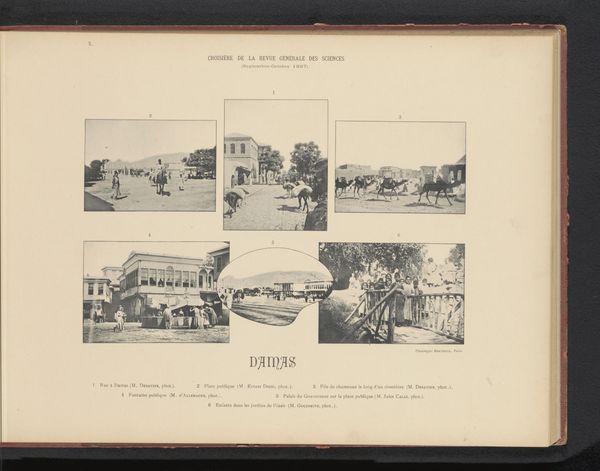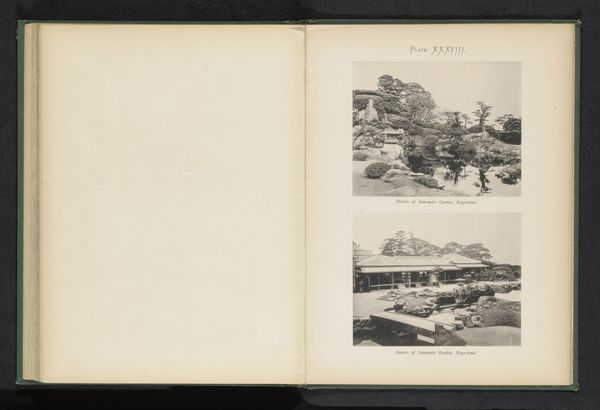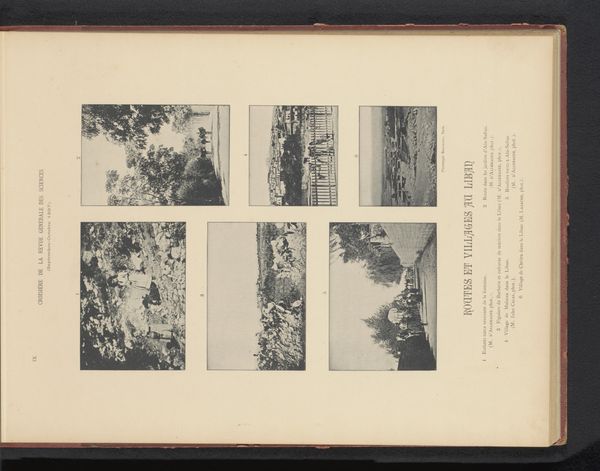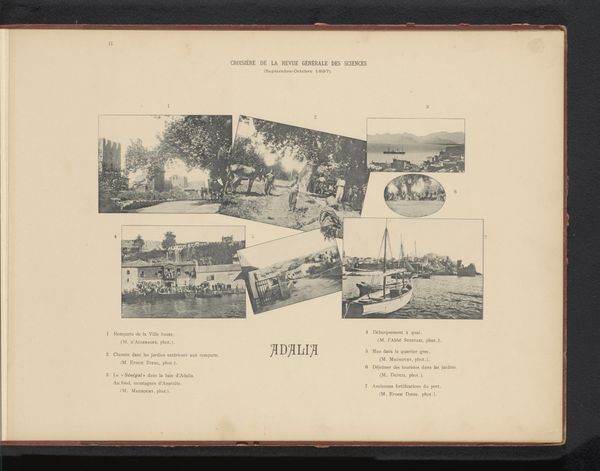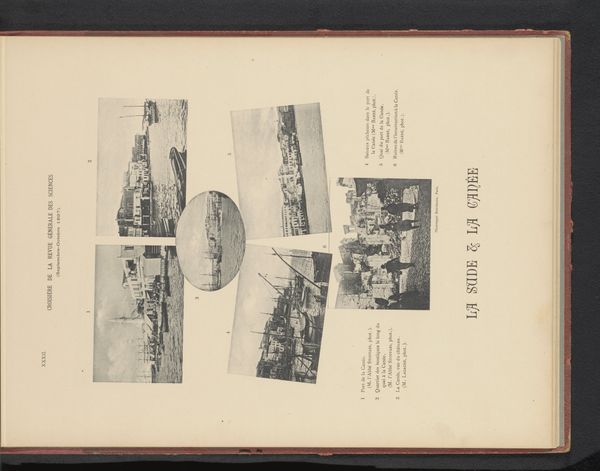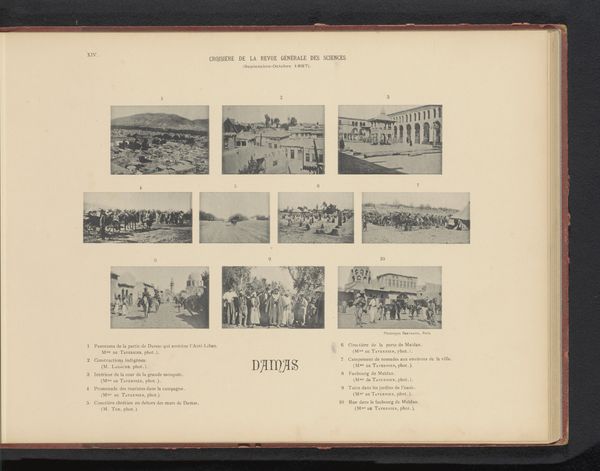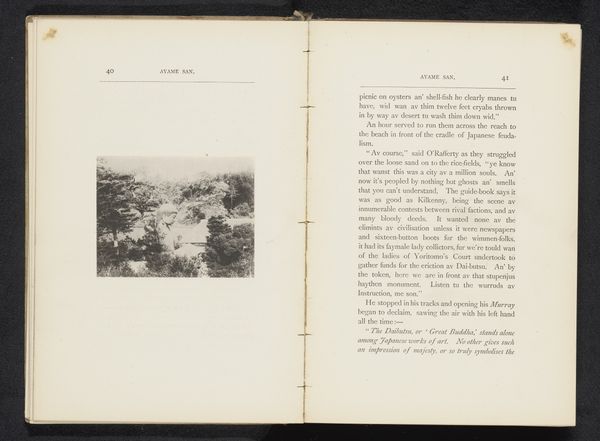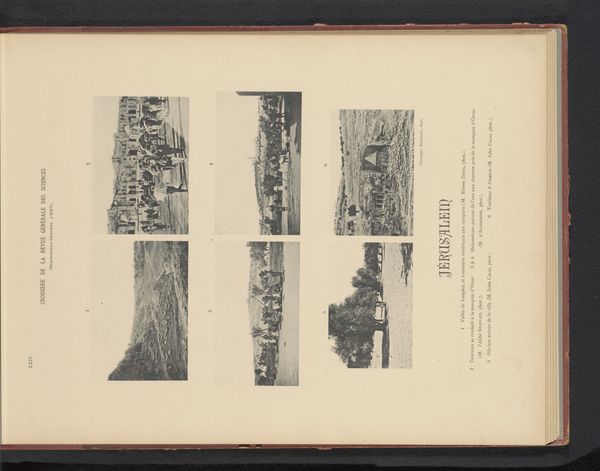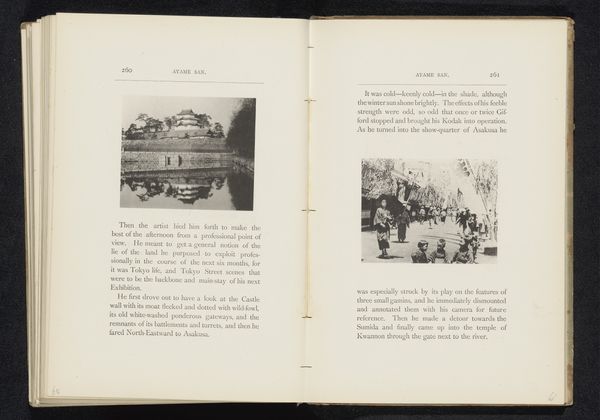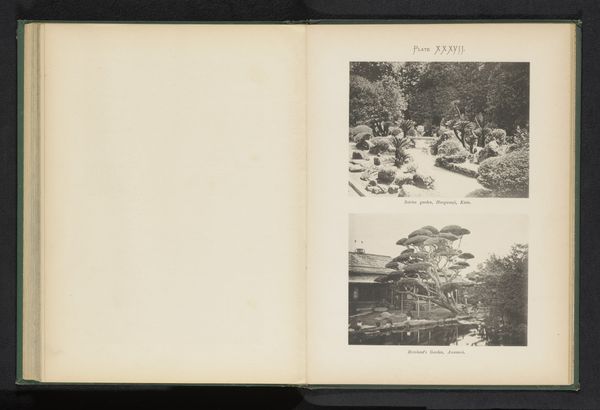
print, photography
# print
#
landscape
#
photography
#
orientalism
#
watercolour illustration
Dimensions: height 293 mm, width 355 mm
Copyright: Rijks Museum: Open Domain
Curator: Let's delve into this fascinating photographic print by Jules Calas, entitled "Five Views of Jaffa and Surroundings, Israel," dating from before 1898. Editor: It strikes me initially as a kind of visual postcard, presenting various vignettes rather than one cohesive image. The monochrome lends it a historical feel, of course. Is that the intent? Curator: To some extent. The composition is deliberately ethnographic, characteristic of Orientalist photography popular at the time. We see a "garden" at Jaffa, boatmen at sea, a merchant train, a stone quarry--snapshots intended to convey a sense of place and cultural understanding. Editor: Right, the boat in the circular frame feels almost like an emblem of safe passage, but also of controlled vision, in the way it constrains the viewer to see only this contained 'scene', devoid of greater sociopolitical complexities of the region. Is that too critical? Curator: Not at all. This connects to contemporary critiques of Orientalism, noting how such representations reinforced power dynamics between the West and the East. These scenes might appear idyllic, but the power imbalances that allowed for their creation cannot be overlooked. This imagery exoticized the landscapes and people to satisfy European curiorisity. Editor: And consider the selection of scenes: trade, quarrying. Are we invited to ponder extraction and economic interests in these lands? The cultural memory imprinted through repeated viewings, might unintentionally point to deeper connections Curator: Precisely. It asks us to be more vigilant as audiences. We cannot just focus on their beauty as picturesque documents and records. This work calls on us to deconstruct the artist's intention in relation to how this art object perpetuates power, influence and cultural bias. Editor: Understanding the visual symbolism really changes the experience here; from something that seemed straightforward, it becomes quite a thought-provoking piece. Curator: Exactly. It showcases how historical images can act as catalysts for interrogating present-day realities. Thank you for your reading between the lines, it brought a different kind of awareness to what these scenes may or may not mean.
Comments
No comments
Be the first to comment and join the conversation on the ultimate creative platform.
